Riku Voipio: Adguard DNS, or how to reduce ads without apps/extensions



Daniel Kahn Gillmor<dkg@debian.org><dkg@fifthhorseman.net>-----BEGIN PGP PUBLIC KEY BLOCK-----
xjMEZXEJyxYJKwYBBAHaRw8BAQdA5BpbW0bpl5qCng/RiqwhQINrplDMSS5JsO/Y
O+5Zi7HCwAsEHxYKAH0FgmVxCcsDCwkHCRC7fpEBSV5r90cUAAAAAAAeACBzYWx0
QG5vdGF0aW9ucy5zZXF1b2lhLXBncC5vcmfUAgfN9tyTSxpxhmHA1r63GiI4v6NQ
mrrWVLOBRJYuhQMVCggCmwECHgEWIQTUdwQMcMIValwphUm7fpEBSV5r9wAAmaEA
/3MvYJMxQdLhIG4UDNMVd2bsovwdcTrReJhLYyFulBrwAQD/j/RS+AXQIVtkcO9b
l6zZTAO9x6yfkOZbv0g3eNyrAs0QPGRrZ0BkZWJpYW4ub3JnPsLACwQTFgoAfQWC
ZXEJywMLCQcJELt+kQFJXmv3RxQAAAAAAB4AIHNhbHRAbm90YXRpb25zLnNlcXVv
aWEtcGdwLm9yZ4l+Z3i19Uwjw3CfTNFCDjRsoufMoPOM7vM8HoOEdn/vAxUKCAKb
AQIeARYhBNR3BAxwwhVqXCmFSbt+kQFJXmv3AAALZQEAhJsgouepQVV98BHUH6Sv
WvcKrb8dQEZOvHFbZQQPNWgA/A/DHkjYKnUkCg8Zc+FonqOS/35sHhNA8CwqSQFr
tN4KzRc8ZGtnQGZpZnRoaG9yc2VtYW4ubmV0PsLACgQTFgoAfQWCZXEJywMLCQcJ
ELt+kQFJXmv3RxQAAAAAAB4AIHNhbHRAbm90YXRpb25zLnNlcXVvaWEtcGdwLm9y
ZxLvwkgnslsAuo+IoSa9rv8+nXpbBdab2Ft7n4H9S+d/AxUKCAKbAQIeARYhBNR3
BAxwwhVqXCmFSbt+kQFJXmv3AAAtFgD4wqcUfQl7nGLQOcAEHhx8V0Bg8v9ov8Gs
Y1ei1BEFwAD/cxmxmDSO0/tA+x4pd5yIvzgfGYHSTxKS0Ww3hzjuZA7NE0Rhbmll
bCBLYWhuIEdpbGxtb3LCwA4EExYKAIAFgmVxCcsDCwkHCRC7fpEBSV5r90cUAAAA
AAAeACBzYWx0QG5vdGF0aW9ucy5zZXF1b2lhLXBncC5vcmd7X4TgiINwnzh4jar0
Pf/b5hgxFPngCFxJSmtr/f0YiQMVCggCmQECmwECHgEWIQTUdwQMcMIValwphUm7
fpEBSV5r9wAAMuwBAPtMonKbhGOhOy+8miAb/knJ1cIPBjLupJbjM+NUE1WyAQD1
nyGW+XwwMrprMwc320mdJH9B0jdokJZBiN7++0NoBM4zBGVxCcsWCSsGAQQB2kcP
AQEHQI19uRatkPSFBXh8usgciEDwZxTnnRZYrhIgiFMybBDQwsC/BBgWCgExBYJl
cQnLCRC7fpEBSV5r90cUAAAAAAAeACBzYWx0QG5vdGF0aW9ucy5zZXF1b2lhLXBn
cC5vcmfCopazDnq6hZUsgVyztl5wmDCmxI169YLNu+IpDzJEtQKbAr6gBBkWCgBv
BYJlcQnLCRB3LRYeNc1LgUcUAAAAAAAeACBzYWx0QG5vdGF0aW9ucy5zZXF1b2lh
LXBncC5vcmcQglI7G7DbL9QmaDkzcEuk3QliM4NmleIRUW7VvIBHMxYhBHS8BMQ9
hghL6GcsBnctFh41zUuBAACwfwEAqDULksr8PulKRcIP6N9NI/4KoznyIcuOHi8q
Gk4qxMkBAIeV20SPEnWSw9MWAb0eKEcfupzr/C+8vDvsRMynCWsDFiEE1HcEDHDC
FWpcKYVJu36RAUlea/cAAFD1AP0YsE3Eeig1tkWaeyrvvMf5Kl1tt2LekTNWDnB+
FUG9SgD+Ka8vfPR8wuV8D3y5Y9Qq9xGO+QkEBCW0U1qNypg65QHOOARlcQnLEgor
BgEEAZdVAQUBAQdAWTLEa0WmnhUmDBdWXX0ZlYAa4g1CK/fXg0NPOQSteA4DAQgH
wsAABBgWCgByBYJlcQnLCRC7fpEBSV5r90cUAAAAAAAeACBzYWx0QG5vdGF0aW9u
cy5zZXF1b2lhLXBncC5vcmexrMBZe0QdQ+ZJOZxFkAiwCw2I7yTSF2Ox9GVFWKmA
mAKbDBYhBNR3BAxwwhVqXCmFSbt+kQFJXmv3AABcJQD/f4ltpSvLBOBEh/C2dIYa
dgSuqkCqq0B4WOhFRkWJZlcA/AxqLWG4o8UrrmwrmM42FhgxKtEXwCSHE00u8wR4
Up8G
=9Yc8
-----END PGP PUBLIC KEY BLOCK-----
Plug in a USB stick - use dmesg or your favourite method to see how it is identified.
Make a couple of mount points under /mnt - /mnt/data and /mnt/cdrom
1. Grab a USB stick, Partition using MBR. Make a single VFAT
partition, type 0xEF (i.e. EFI System Partition)
For a USB stick (identified as sdX) below:
$ sudo parted --script /dev/sdX mklabel msdos $ sudo parted --script /dev/sdX mkpart primary fat32 0% 100% $ sudo mkfs.vfat /dev/sdX1
$ sudo mount /dev/sdX1 /mnt/data/
Download an arm64 netinst.iso
https://cdimage.debian.org/debian-cd/current/arm64/iso-cd/debian-12.2.0-arm64-netinst.iso
2. Copy the complete contents of partition *1* from a Debian arm64
installer image into the filesystem (partition 1 is the installer
stuff itself) on the USB stick, in /
$ sudo kpartx -v -a debian-12.2.0-arm64-netinst.iso # Mount the first partition on the ISO and copy its contents to the stick $ sudo mount /dev/mapper/loop0p1 /mnt/cdrom/ $ sudo rsync -av /mnt/cdrom/ /mnt/data/ $ sudo umount /mnt/cdrom
3. Copy the complete contents of partition *2* from that Debian arm64
installer image into that filesystem (partition 2 is the ESP) on
the USB stick, in /
# Same story with the second partition on the ISO
$ sudo mount /dev/mapper/loop0p2 /mnt/cdrom/
$ sudo rsync -av /mnt/cdrom/ /mnt/data/ $ sudo umount /mnt/cdrom
$ sudo kpartx -d debian-testing-amd64-netinst.iso $ sudo umount /mnt/data
4. Grab the rpi edk2 build from https://github.com/pftf/RPi4/releases
(I used 1.35) and extract it. I copied the files there into *2*
places for now on the USB stick:
/ (so the Pi will boot using it)
/rpi4 (so we can find the files again later)
5. Add the preseed.cfg file (attached) into *both* of the two initrd
files on the USB stick
- /install.a64/initrd.gz and
- /install.a64/gtk/initrd.gz
cpio is an awful tool to use :-(. In each case:
$ cp /path/to/initrd.gz .
$ gunzip initrd.gz
$ echo preseed.cfg cpio -H newc -o -A -F initrd
$ gzip -9v initrd
$ cp initrd.gz /path/to/initrd.gz
If you look at the preseed file, it will do a few things:
- Use an early_command to unmount /media (to work around Debian bug
#1051964)
- Register a late_command call for /cdrom/finish-rpi (the next
file - see below) to run at the end of the installation.
- Force grub installation also to the EFI removable media path,
needed as the rpi doesn't store EFI boot variables.
- Stop the installer asking for firmware from removable media (as
the rpi4 will ask for broadcom bluetooth fw that we can't
ship. Can be ignored safely.)
6. Copy the finish-rpi script (attached) into / on the USB stick. It
will be run at the end of the installation, triggered via the
preseed. It does a couple of things:
- Copy the edk2 firmware files into the ESP on the system that's
just been installer
- Remove shim-signed from the installed systems, as there's a bug
that causes it to fail on rpi4. I need to dig into this to see
what the issue is.
That's it! Run the installer as normal, all should Just Work (TM).
BlueTooth didn't quite work : raspberrypi-firmware didn't install until adding a symlink for boot/efi to /boot/firmware
20231127 - This may not be necessary because raspberrypi-firmware path has been fixed
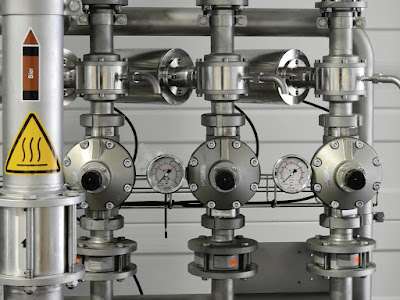 |
| Photo by Pixabay |
Given a typical install of 3 generic kernel ABIs in the default configuration on a regular-sized VM (2 CPU cores 8GB of RAM) the following metrics are achieved in Ubuntu 23.10 versus Ubuntu 22.04 LTS:
2x less disk space used (1,417MB vs 2,940MB, including initrd)
3x less peak RAM usage for the initrd boot (68MB vs 204MB)
0.5x increase in download size (949MB vs 600MB)
2.5x faster initrd generation (4.5s vs 11.3s)
approximately the same total time (103s vs 98s, hardware dependent)
For minimal cloud images that do not install either linux-firmware or modules extra the numbers are:
1.3x less disk space used (548MB vs 742MB)
2.2x less peak RAM usage for initrd boot (27MB vs 62MB)
0.4x increase in download size (207MB vs 146MB)
Hopefully, the compromise of download size, relative to the disk space & initrd savings is a win for the majority of platforms and use cases. For users on extremely expensive and metered connections, the likely best saving is to receive air-gapped updates or skip updates.
This was achieved by precompressing kernel modules & firmware files with the maximum level of Zstd compression at package build time; making actual .deb files uncompressed; assembling the initrd using split cpio archives - uncompressed for the pre-compressed files, whilst compressing only the userspace portions of the initrd; enabling in-kernel module decompression support with matching kmod; fixing bugs in all of the above, and landing all of these things in time for the feature freeze. Whilst leveraging the experience and some of the design choices implementations we have already been shipping on Ubuntu Core. Some of these changes are backported to Jammy, but only enough to support smooth upgrades to Mantic and later. Complete gains are only possible to experience on Mantic and later.
The discovered bugs in kernel module loading code likely affect systems that use LoadPin LSM with kernel space module uncompression as used on ChromeOS systems. Hopefully, Kees Cook or other ChromeOS developers pick up the kernel fixes from the stable trees. Or you know, just use Ubuntu kernels as they do get fixes and features like these first.
The team that designed and delivered these changes is large: Benjamin Drung, Andrea Righi, Juerg Haefliger, Julian Andres Klode, Steve Langasek, Michael Hudson-Doyle, Robert Kratky, Adrien Nader, Tim Gardner, Roxana Nicolescu - and myself Dimitri John Ledkov ensuring the most optimal solution is implemented, everything lands on time, and even implementing portions of the final solution.
Hi, It's me, I am a Staff Engineer at Canonical and we are hiring https://canonical.com/careers.
Lots of additional technical details and benchmarks on a huge range of diverse hardware and architectures, and bikeshedding all the things below:
 Meeting Debian people for having a good time together, for some good hacking,
for learning, for teaching Is always fun and welcome. It brings energy, life
and joy. And this year, due to the six-months-long relocation my family and me
decided to have to Argentina, I was unable to attend the real deal, DebConf23 at
India.
And while I know DebConf is an experience like no other, this year I took part
in two miniDebConfs. One I have already shared in this same blog: I was in
MiniDebConf Tamil Nadu in
India, followed by
some days of pre-DebConf preparation and scouting in Kochi proper, where I got
to interact with the absolutely great and loving team that prepared DebConf.
Meeting Debian people for having a good time together, for some good hacking,
for learning, for teaching Is always fun and welcome. It brings energy, life
and joy. And this year, due to the six-months-long relocation my family and me
decided to have to Argentina, I was unable to attend the real deal, DebConf23 at
India.
And while I know DebConf is an experience like no other, this year I took part
in two miniDebConfs. One I have already shared in this same blog: I was in
MiniDebConf Tamil Nadu in
India, followed by
some days of pre-DebConf preparation and scouting in Kochi proper, where I got
to interact with the absolutely great and loving team that prepared DebConf.
 The other one is still ongoing (but close to finishing). Some months ago, I
talked with Santiago Ruano, jokin as we were Spanish-speaking DDs announcing to
the debian-private mailing list we d be relocating to around R o de la
Plata. And things worked out normally: He has been for several months in
Uruguay already, so he decided to rent a house for some days, and invite Debian
people to do what we do best.
I left Paran Tuesday night (and missed my online class at UNAM! Well, you
cannot have everything, right?). I arrived early on Wednesday, and around noon
came to the house of the keysigning (well, the place is properly called Casa
Key , it s a publicity agency that is also rented as a guesthouse in a very nice
area of Montevideo, close to Nuevo Pocitos beach).
The other one is still ongoing (but close to finishing). Some months ago, I
talked with Santiago Ruano, jokin as we were Spanish-speaking DDs announcing to
the debian-private mailing list we d be relocating to around R o de la
Plata. And things worked out normally: He has been for several months in
Uruguay already, so he decided to rent a house for some days, and invite Debian
people to do what we do best.
I left Paran Tuesday night (and missed my online class at UNAM! Well, you
cannot have everything, right?). I arrived early on Wednesday, and around noon
came to the house of the keysigning (well, the place is properly called Casa
Key , it s a publicity agency that is also rented as a guesthouse in a very nice
area of Montevideo, close to Nuevo Pocitos beach).
 In case you don t know it, Montevideo is on the Northern (or Eastern) shore of
R o de la Plata, the widest river in the world (up to 300Km wide, with current
and non-salty water). But most important for some Debian contributors: You can
even come here by boat!
In case you don t know it, Montevideo is on the Northern (or Eastern) shore of
R o de la Plata, the widest river in the world (up to 300Km wide, with current
and non-salty water). But most important for some Debian contributors: You can
even come here by boat!
 That first evening, we received Ilu, who was in Uruguay by chance for other
issues (and we were very happy about it!) and a young and enthusiastic
Uruguayan, Felipe, interested in getting involved in Debian. We spent the
evening talking about life, the universe and everything Which was a bit
tiring, as I had to interface between Spanish and English, talking with two
friends that didn t share a common language
On Thursday morning, I went out for an early walk at the beach. And lets say, if
only just for the narrative, that I found a lost penguin emerging from R o de la
Plata!
That first evening, we received Ilu, who was in Uruguay by chance for other
issues (and we were very happy about it!) and a young and enthusiastic
Uruguayan, Felipe, interested in getting involved in Debian. We spent the
evening talking about life, the universe and everything Which was a bit
tiring, as I had to interface between Spanish and English, talking with two
friends that didn t share a common language
On Thursday morning, I went out for an early walk at the beach. And lets say, if
only just for the narrative, that I found a lost penguin emerging from R o de la
Plata!
 For those that don t know (who d be most of you, as he has not been seen at
Debian events for 15 years), that s Lisandro Dami n Nicanor P rez Meyer (or just
For those that don t know (who d be most of you, as he has not been seen at
Debian events for 15 years), that s Lisandro Dami n Nicanor P rez Meyer (or just
lisandro), long-time maintainer of the Qt ecosystem, and one of our embedded
world extraordinaires. So, after we got him dry and fed him fresh river fishes,
he gave us a great impromptu talk about understanding and finding our way around
the Device Tree Source files for development boards and similar machines, mostly
in the ARM world.
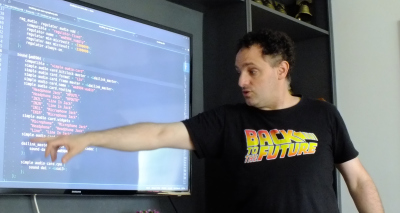 From Argentina, we also had Emanuel (
From Argentina, we also had Emanuel (eamanu) crossing all the way from La
Rioja.
I spent most of our first workday getting my laptop in shape to be useful as
the driver for my online class on Thursday (which is no small feat people that
know the particularities of my much loved ARM-based laptop will understand), and
running a set of tests again on my Raspberry Pi labortory, which I had not
updated in several months.
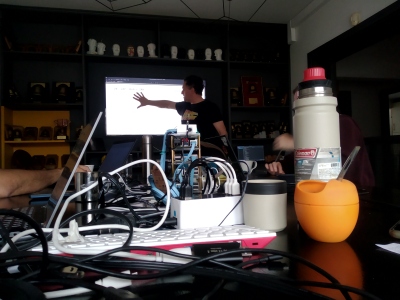 I am happy to say we are also finally also building Raspberry images for Trixie
(Debian 13, Testing)! Sadly, I managed
to burn my USB-to-serial-console (UART) adaptor, and could neither test those,
nor the oldstable ones we are still building (and will probably soon be dropped,
if not for anything else, to save disk space).
We enjoyed a lot of socialization time. An important highlight of the conference
for me was that we reconnected with a long-lost DD, Eduardo Tr pani, and got him
interested in getting involved in the project again! This second day, another
local Uruguayan, Mauricio, joined us together with his girlfriend,
Alicia, and Felipe came again to hang out with us. Sadly, we didn t get
photographic evidence of them (nor the permission to post it).
I am happy to say we are also finally also building Raspberry images for Trixie
(Debian 13, Testing)! Sadly, I managed
to burn my USB-to-serial-console (UART) adaptor, and could neither test those,
nor the oldstable ones we are still building (and will probably soon be dropped,
if not for anything else, to save disk space).
We enjoyed a lot of socialization time. An important highlight of the conference
for me was that we reconnected with a long-lost DD, Eduardo Tr pani, and got him
interested in getting involved in the project again! This second day, another
local Uruguayan, Mauricio, joined us together with his girlfriend,
Alicia, and Felipe came again to hang out with us. Sadly, we didn t get
photographic evidence of them (nor the permission to post it).
 The nice house Santiago got for us was very well equipped for a
miniDebConf. There were a couple of rounds of pool played by those that enjoyed
it (I was very happy just to stand around, take some photos and enjoy the
atmosphere and the conversation).
The nice house Santiago got for us was very well equipped for a
miniDebConf. There were a couple of rounds of pool played by those that enjoyed
it (I was very happy just to stand around, take some photos and enjoy the
atmosphere and the conversation).
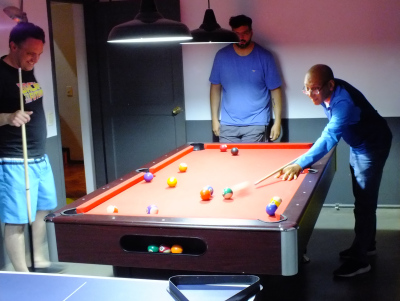


 Today (Saturday) is the last full-house day of miniDebConf; tomorrow we will be
leaving the house by noon. It was also a very productive day! We had a long,
important conversation about an important discussion that we are about to
present on
Today (Saturday) is the last full-house day of miniDebConf; tomorrow we will be
leaving the house by noon. It was also a very productive day! We had a long,
important conversation about an important discussion that we are about to
present on debian-vote@lists.debian.org.
It has been a great couple of days! Sadly, it s coming to an end But this at
least gives me the opportunity (and moral obligation!) to write a long blog
post. And to thank Santiago for organizing this, and Debian, for sponsoring our
trip, stay, foods and healthy enjoyment!
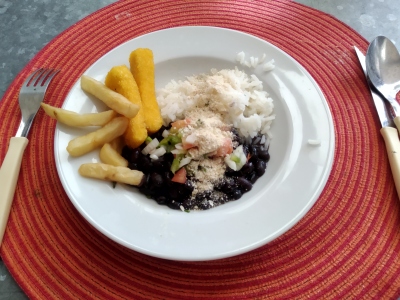
Farewell from the Reproducible Builds summit, which just took place in Hamburg, Germany:
 This year, we were thrilled to host the seventh edition of this exciting event. Topics covered this year included:
This year, we were thrilled to host the seventh edition of this exciting event. Topics covered this year included:
armhf and arm64) is not even
mentioned. Is this really true? It is, after all a Debian-based
system, so it should in theory be doable. Let s try!
We have always said that for a major version upgrade, you should re-image your SD card and start again with a clean image. In the past, we have suggested procedures for updating an existing image to the new version, but always with the caveat that we do not recommend it, and you do this at your own risk. This time, because the changes to the underlying architecture are so significant, we are not suggesting any procedure for upgrading a Bullseye image to Bookworm; any attempt to do this will almost certainly end up with a non-booting desktop and data loss. The only way to get Bookworm is either to create an SD card using Raspberry Pi Imager, or to download and flash a Bookworm image from here with your tool of choice.Which means, it s time to actually try it turns out it s actually trivial, if you use RPIs as headless servers. I had only three issues:
initrd, the new initrd-building scripts/hooks are
looking for some binaries in /usr/bin, and not in /bin;
solution: install manually the usrmerge package, and then re-run
dpkg --configure -a;/boot/config-$(uname -r), and the raspberry pi
kernel package doesn t provide this; workaround: modprobe configs && zcat /proc/config.gz > /boot/config-$(uname -r);/etc/network/interface, migrating
from the previous dhcpcd to NetworkManager will break network
connectivity, and require you to log in locally and fix things.login.defs
being rewritten from scratch and showing a baffling diff, for
example), it was easy.
Is it worth doing? Definitely. Had no data loss, and no non-booting
system.
devscripts, since you will need dget dpkg --add-architecture arm64whiptail:amd64 and rejoice at
running a 64-bit binary!dget
and dpkg -iarmhf and arm64 versions
before doing dpkg -i, since you ll need to rollback some
installsdpkg and apt to
arm64, at which point the default architecture flips over; from
here, if you ve done it at the right moment, it becomes very easy;
you ll probably need an apt install --fix-broken, though, at
firstarm64 versionsdpkg --remove-architecture armhf, reboot, and profit!apt-show-versions to see which packages have
versions that are no longer in any repo, then downgrade them.
There s a further, minor, complication that there were about 3-4
packages with same version but different hash (!), which simply needed
apt install --reinstall, I think.
arch:any), that is
fine. But architecture-independent packages (arch:all) are
problematic since usually they depend on a binary package, but they
always depend on the default architecture version!
Hrmm, and I just realise I don t have logs from this, so I m only ~80% confident. But basically:
vim-solarized (arch:all) depends on vim (arch:any)vim-solarized, until the default architecture becomes arm64Multi-Arch: foreign solves this, per the debian wiki which says:
Note that even thoughIt also has warnings about how to properly use this. But, in general, not many packages have it, so it is a problem.Architecture: allandMulti-Arch: foreignmay look like similar concepts, they are not. The former means that the same binary package can be installed on different architectures. Yet, after installation such packages are treated as if they were native architecture (by definition the architecture of the dpkg package) packages. Thus Architecture: all packages cannot satisfy dependencies from other architectures without being marked Multi-Arch foreign.
dpkg -i)# apt install systemd:arm64 --no-install-recommends
The following packages will be REMOVED:
systemd
The following NEW packages will be installed:
systemd:arm64
0 upgraded, 1 newly installed, 1 to remove and 35 not upgraded.
Do you want to continue? [Y/n] y
dpkg: systemd: dependency problems, but removing anyway as you requested:
systemd-sysv depends on systemd.
Removing systemd (247.3-7+deb11u2) ...
systemd is the active init system, please switch to another before removing systemd.
dpkg: error processing package systemd (--remove):
installed systemd package pre-removal script subprocess returned error exit status 1
dpkg: too many errors, stopping
Errors were encountered while processing:
systemd
Processing was halted because there were too many errors.dpkg -i
from /var/cache/apt/archives.
In this case it manifested via a prerm script, in other cases is
manifests via dependencies that are no longer satisfied for packages
that can t be removed, etc. etc. So you will have to resort to dpkg -i a lot.
lib package,
in one go, since these can coexist.
Well, this simple plan is complicated by the fact that some packages
are named libfoo-bar, but are actual holding (e.g.) the bar binary
for the libfoo package. Examples:
libmagic-mgc contains /usr/lib/file/magic.mgc, which conflicts
between the 32 and 64 bit versions; of course, it s the exact same
file, so this should be an arch:all package, but libpam-modules-bin and liblockfile-bin actually contain binaries
(per the -bin suffix)# apt install $(dpkg -i grep ^ii awk ' print $2 ' grep :amrhf sed -e 's/:armhf/:arm64')
xzcat haos_generic-x86-64-11.0.img.xz dd of=/dev/mmcblk0 bs=1M
That just worked, prefectly and really fast. If you want to use a GUI in a live environment, then just using
the gnome-disk-utility ("Disks" in Gnome menu) and using the "Restore Disk Image ..." on a partition would
work just as well. It even supports decompressing the XZ images directly while writing.
But that image is small, will it not have a ton of unused disk space behind the fixed install partition? Yes,
it will ... until first boot. The HA OS takes over the empty space after its install partition on the first
boot-up and just grows its main partition to take up all the remaining space. Smart. After first boot is
completed, the first boot wizard can be accessed via your web browser and one of the prominent buttons there
is restoring from backup. So you just give it the backup file and wait. Sadly the restore does not actually give
any kind of progress, so your only way to figure out when it is done is opening the same web adress in another
browser tab and refresh periodically - after restoring from backup it just boots into the same config at it had
before - all the settings, all the devices, all the history is preserved. Even authentification tokens are
preserved so if yu had a Home Assitant Mobile installed on your phone (both for remote access and to send
location info and phone state, like charging, to HA to trigger automations) then it will just suddenly start
working again without further actions needed from your side. That is an almost perfect backup/restore experience.
The first thing you get for using the OS version of HA is easy automatic update that also automatically takes
a backup before upgrade, so if anything breaks you can roll back with one click. There is also a command-line
tool that allows to upgrade, but also downgrade ha-core and other modules. I had to use it today as HA version
23.10.4 actually broke support for the Sonoff bridge that I am using to control Zigbee devices, which are like
90% of all smart devices in my home. Really helpful stuff, but not a must have.
What is a must have and that you can (really) only get with Home Assistant Operating System are Addons. Some
addons are just normal servers you can run alongside HA on the same HA OS server, like MariaDB or Plex or a
file server. That is not the most important bit, but even there the software comes pre-configured to use in
a home server configuration and has a very simple config UI to pre-configure key settings, like users,
passwords and database accesses for MariaDB - you can litereally in a few clicks and few strings make serveral
users each with its own access to its own database. Couple more clicks and the DB is running and will be kept
restarted in case of failures.
But the real gems in the Home Assistant Addon Store are modules that extend Home Assitant core functionality
in way that would be really hard or near impossible to configure in Home Assitant Container manually,
especially because no documentation has ever existed for such manual config - everyone just tells you to
install the addon from HA Addon store or from HACS. Or you can read the addon metadata in various repos and
figure out what containers it actually runs with what settings and configs and what hooks it puts into the HA
Core to make them cooperate. And then do it all over again when a new version breaks everything 6 months later
when you have already forgotten everything. In the Addons that show up immediately after installation are
addons to install the new Matter
server, a MariaDB and MQTT server
(that other addons can use for data storage
and message exchange), Z-Wave support and ESPHome integration and very handy File manager that includes
editors to edit Home Assitant configs directly in brower and SSH/Terminal addon that boht allows SSH
connection and also a
web based terminal that gives access to the OS itself and also to a comand line interface, for example, to
do package downgrades if needed or see detailed logs. And also there is where you can get the features
that are the focus this year for HA developers - voice enablers.
However that is only a beginning. Like in Debian you can add additional repositories to expand your list of
available addons. Unlike Debian most of the amazing software that is available for Home Assistant is outside
the main, official addon store. For now I have added the most popular addon repository - HACS (Home Assistant
Community Store) and repository maintained by Alexbelgium. The first includes things like NodeRED (a workflow
based automation programming UI), Tailscale/Wirescale for VPN servers, motionEye for CCTV control, Plex for
home streaming. HACS also includes a lot of HA UI enhacement modules, like themes, custom UI control panels
like Mushroom or mini-graph-card and integrations that provide more advanced functions, but also require
more knowledge to use, like Local Tuya - that is harder to set up, but allows fully local control of (normally)
cloud-based devices. And it has AppDaemon - basically a Python based automation framework where you put in
Python scrips that get run in a special environment where they get fed events from Home Assistant and can
trigger back events that can control everything HA can and also do anything Python can do. This I will need
to explore later.
And the repository by Alex includes the thing that is actually the focus of this blog post (I know :D) -
Firefly III addon and Firefly Importer addon that you can then add to your Home Assistant OS with a few
clicks. It also has all kinds of addons for NAS management, photo/video server, book servers and
Portainer that
lets us setup and run any Docker container inside the HA OS structure. HA OS will detect this and warn you
about unsupported processes running on your HA OS instance (nice security feature!), but you can just dismiss
that. This will be very helpful very soon.
This whole environment of OS and containers and apps really made me think - what was missing in Debian that
made the talented developers behind all of that to spend the immense time and effor to setup a completely
new OS and app infrastructure and develop a completel paraller developer community for Home Assistant apps,
interfaces and configurations. Is there anything that can still be done to make HA community and the
general open source and Debian community closer together? HA devs are not doing anything wrong: they are
using the best open source can provide, they bring it to people whould could not install and use it otherwise,
they are contributing fixes and improvements as well. But there must be some way to do this better, together.
So I installed MariaDB, create a user and database for Firefly. I installed Firefly III and configured
it to use the MariaDB with the web config UI. When I went into the Firefly III web UI I was confronted with
the normal wizard to setup a new instance. And no reference to any backup restore. Hmm, ok. Maybe that goes
via the Importer? So I make an access token again, configured the Importer to use that, configured the
Nordlinger bank connection settings. Then I tried to import the export that I downloaded from Firefly III
before. The importer did not auto-recognose the format. Turns out it is just a list of transactions ...
It can only be barely useful if you first manually create all the asset accounts with the same names as
before and even then you'll again have to deal with resolving the problem of transfers showing up twice.
And all of your categories (that have not been used yet) are gone, your automation rules and bills are gone,
your budgets and piggy banks are gone. Boooo. It will be easier for me to recreate my account data from
bank exports again than to resolve data in that transaction export.
Turns out that Firefly III documenation explicitly
recommends making a mysqldump of your own and not rely
on anything in the app itself for backup purposes. Kind of sad this was not mentioned in the export page
that sure looked a lot like a backup :D
After doing all that work all over again I needed to make something new not to feel like I wasted days of
work for no real gain. So I started solving a problem I had for a while already - how do I add cash
transations to the system when I am out of the house with just my phone in the hand? So far my workaround has
been just sending myself messages in WhatsApp with the amount and description of any cash expenses. Two
solutions are possible: app and bot.
There are actually multiple Android-based phone apps that work with Firefly III API to do full
financial management from the phone. However, after trying it out, that is not what I will be using most
of the time. First of all this requires your Firefly III instance to be accessible from the Internet. Either
via direct API access using some port forwarding and secured with HTTPS and good access tokens, or via
a VPN server redirect that is installed on both HA and your phone. Tailscale was really easy to get working.
But the power has its drawbacks - adding a new cash transaction requires opening the app, choosing new
transaction view, entering descriptio, amount, choosing "Cash" as source account and optionally choosing
destination expense account, choosing category and budget and then submitting the form to the server.
Sadly none of that really works if you have no Internet or bad Internet at the place where you are using
cash. And it's just too many steps. Annoying.
An easier alternative is setting up a Telegram bot -
it is running in a custom Docker container right
next to your Firefly (via Portainer) and you talk to it via a custom Telegram chat channel that you create
very easily and quickly. And then you can just tell it "Coffee 5" and it will create a transaction
from the (default) cash account in 5 amount with description "Coffee". This part also works if you are
offline at the moment - the bot will receive the message once you get back online. You can use Telegram
bot menu system to edit the transaction to add categories or expense accounts, but this part only work
if you are online. And the Firefly instance does not have to be online at all. Really nifty.
So next week I will need to write up all the regular payments as bills in Firefly (again) and then I can start
writing a Python script to predict my (financial) future!media-dir, or the wide_links options should be set to yes, otherwise the symbolic links that point outside of the media-dir won t be served.
As a client I used VLC (note for myself in case I ever forget, it s under View Playlist and then Local Network Universal Plug n Play), mostly because I already had it around.
Now that I ve used it for a few months I have to say that it isn t a perfect solution: the main format I store my music in is in flac 2, which isn t supported by dlna; for a significant part of it I ve also already generated single-song ogg files for convenience 3, and at least it works for those.
I don t store (yet?) my video collection on the A10 device, but I did a quick test, and no, of course a raw dump of a DVD as generated by dvdbackup isn t supported, so I would have to convert those too. And there is some support for subtitles as a separate file (which is something else I tend to have around), but only one file, with strict requirements for the name, which is a bit restrictive.
On the other hand, the hassle to set this up was so low that the functionality / hassle ratio is most definitely worth, and I m quite happy I did and plan to continue using it.

 DebConf23, the 24th edition of the Debian
conference is taking place in Infopark at Kochi, Kerala, India.
Thanks to the hard work of its organizers, it will be, this year as well, an
interesting and fruitful event for attendees.
We would like to warmly welcome the sponsors of DebConf23, and
introduce them to you.
We have three Platinum sponsors.
DebConf23, the 24th edition of the Debian
conference is taking place in Infopark at Kochi, Kerala, India.
Thanks to the hard work of its organizers, it will be, this year as well, an
interesting and fruitful event for attendees.
We would like to warmly welcome the sponsors of DebConf23, and
introduce them to you.
We have three Platinum sponsors.
Welcome to the August 2023 report from the Reproducible Builds project!
 In these reports we outline the most important things that we have been up to over the past month. As a quick recap, whilst anyone may inspect the source code of free software for malicious flaws, almost all software is distributed to end users as pre-compiled binaries.
The motivation behind the reproducible builds effort is to ensure no flaws have been introduced during this compilation process by promising identical results are always generated from a given source, thus allowing multiple third-parties to come to a consensus on whether a build was compromised. If you are interested in contributing to the project, please visit our Contribute page on our website.
In these reports we outline the most important things that we have been up to over the past month. As a quick recap, whilst anyone may inspect the source code of free software for malicious flaws, almost all software is distributed to end users as pre-compiled binaries.
The motivation behind the reproducible builds effort is to ensure no flaws have been introduced during this compilation process by promising identical results are always generated from a given source, thus allowing multiple third-parties to come to a consensus on whether a build was compromised. If you are interested in contributing to the project, please visit our Contribute page on our website.
serde_derive macro as a precompiled binary. As Ax Sharma writes:
The move has generated a fair amount of push back among developers who worry about its future legal and technical implications, along with a potential for supply chain attacks, should the maintainer account publishing these binaries be compromised.After intensive discussions, use of the precompiled binary was phased out.
 On August 4th, Holger Levsen gave a talk at BornHack 2023 on the Danish island of Funen titled Reproducible Builds, the first ten years which promised to contain:
On August 4th, Holger Levsen gave a talk at BornHack 2023 on the Danish island of Funen titled Reproducible Builds, the first ten years which promised to contain:
[ ] an overview about reproducible builds, the past, the presence and the future. How it started with a small [meeting] at DebConf13 (and before), how it grew from being a Debian effort to something many projects work on together, until in 2021 it was mentioned in an executive order of the president of the United States. (HTML slides)Holger repeated the talk later in the month at Chaos Communication Camp 2023 in Zehdenick, Germany: A video of the talk is available online, as are the HTML slides.
 Just another reminder that our upcoming Reproducible Builds Summit is set to take place from October 31st November 2nd 2023 in Hamburg, Germany.
Our summits are a unique gathering that brings together attendees from diverse projects, united by a shared vision of advancing the Reproducible Builds effort. During this enriching event, participants will have the opportunity to engage in discussions, establish connections and exchange ideas to drive progress in this vital field.
If you re interested in joining us this year, please make sure to read the event page, the news item, or the invitation email that Mattia Rizzolo sent out, which have more details about the event and location.
We are also still looking for sponsors to support the event, so do reach out to the organizing team if you are able to help. (Also of note that PackagingCon 2023 is taking place in Berlin just before our summit, and their schedule has just been published.)
Just another reminder that our upcoming Reproducible Builds Summit is set to take place from October 31st November 2nd 2023 in Hamburg, Germany.
Our summits are a unique gathering that brings together attendees from diverse projects, united by a shared vision of advancing the Reproducible Builds effort. During this enriching event, participants will have the opportunity to engage in discussions, establish connections and exchange ideas to drive progress in this vital field.
If you re interested in joining us this year, please make sure to read the event page, the news item, or the invitation email that Mattia Rizzolo sent out, which have more details about the event and location.
We are also still looking for sponsors to support the event, so do reach out to the organizing team if you are able to help. (Also of note that PackagingCon 2023 is taking place in Berlin just before our summit, and their schedule has just been published.)
 Vagrant Cascadian was interviewed on the SustainOSS podcast on reproducible builds:
Vagrant Cascadian was interviewed on the SustainOSS podcast on reproducible builds:
Vagrant walks us through his role in the project where the aim is to ensure identical results in software builds across various machines and times, enhancing software security and creating a seamless developer experience. Discover how this mission, supported by the Software Freedom Conservancy and a broad community, is changing the face of Linux distros, Arch Linux, openSUSE, and F-Droid. They also explore the challenges of managing random elements in software, and Vagrant s vision to make reproducible builds a standard best practice that will ideally become automatic for users. Vagrant shares his work in progress and their commitment to the last mile problem.The episode is available to listen (or download) from the Sustain podcast website. As it happens, the episode was recorded at FOSSY 2023, and the video of Vagrant s talk from this conference (Breaking the Chains of Trusting Trust is now available on Archive.org:
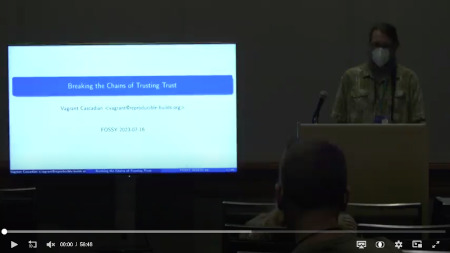 It was also announced that Vagrant Cascadian will be presenting at the Open Source Firmware Conference in October on the topic of Reproducible Builds All The Way Down.
It was also announced that Vagrant Cascadian will be presenting at the Open Source Firmware Conference in October on the topic of Reproducible Builds All The Way Down.
hello-traditional package from Debian. The entire thread can be viewed from the archive page, as can Vagrant Cascadian s reply.
 In diffoscope development this month, versions
In diffoscope development this month, versions 247, 248 and 249 were uploaded to Debian unstable by Chris Lamb, who also added documentation for the new specialize_as method and expanding the documentation of the existing specialize as well [ ]. In addition, Fay Stegerman added specialize_as and used it to optimise .smali comparisons when decompiling Android .apk files [ ], Felix Yan and Mattia Rizzolo corrected some typos in code comments [ , ], Greg Chabala merged the RUN commands into single layer in the package s Dockerfile [ ] thus greatly reducing the final image size. Lastly, Roland Clobus updated tool descriptions to mark that the xb-tool has moved package within Debian [ ].
 In Debian, 28 reviews of Debian packages were added, 14 were updated and 13 were removed this month adding to our knowledge about identified issues. A number of issue types were added, including Chris Lamb adding a new
In Debian, 28 reviews of Debian packages were added, 14 were updated and 13 were removed this month adding to our knowledge about identified issues. A number of issue types were added, including Chris Lamb adding a new timestamp_in_documentation_using_sphinx_zzzeeksphinx_theme toolchain issue.
 In August, F-Droid added 25 new reproducible apps and saw 2 existing apps switch to reproducible builds, making 191 apps in total that are published with Reproducible Builds and using the upstream developer s signature. [ ]
In August, F-Droid added 25 new reproducible apps and saw 2 existing apps switch to reproducible builds, making 191 apps in total that are published with Reproducible Builds and using the upstream developer s signature. [ ]
 Bernhard M. Wiedemann published another monthly report about reproducibility within openSUSE.
Bernhard M. Wiedemann published another monthly report about reproducibility within openSUSE.
arimo (modification time in build results)apptainer (random Go build identifier)arrow (fails to build on single-CPU machines)camlp (parallelism-related issue)developer (Go ordering-related issue)elementary-xfce-icon-theme (font-related problem)gegl (parallelism issue)grommunio (filesystem ordering issue)grpc (drop nondetermistic log)guile-parted (parallelism-related issue)icinga (hostname-based issue)liquid-dsp (CPU-oriented problem)memcached (package fails to build far in the future)openmpi5/openpmix (date/copyright year issue)openmpi5 (date/copyright year issue)orthanc-ohif+orthanc-volview (ordering related issue plus timestamp in a Gzip)perl-Net-DNS (package fails to build far in the future)postgis (parallelism issue)python-scipy (uses an arbitrary build path)python-trustme (package fails to build far in the future)qtbase/qmake/goldendict-ng (timestamp-related issue)qtox (date-related issue)ring (filesytem ordering related issue)scipy (1 & 2) (drop arbtirary build path and filesytem-ordering issue)snimpy (1 & 3) (fails to build on single-CPU machines as well far in the future)tango-icon-theme (font-related issue) The Reproducible Builds project operates a comprehensive testing framework (available at tests.reproducible-builds.org) in order to check packages and other artifacts for reproducibility. In August, a number of changes were made by Holger Levsen:
The Reproducible Builds project operates a comprehensive testing framework (available at tests.reproducible-builds.org) in order to check packages and other artifacts for reproducibility. In August, a number of changes were made by Holger Levsen:
reproducible-tracker.json data file. [ ]pbuilder.tgz for Debian unstable due to #1050784. [ ][ ]usrmerge. [ ][ ]armhf nodes (wbq0 and jtx1a) as down; investigation is needed. [ ]buildd.debian.org. [ ][ ]
#reproducible-builds on irc.oftc.net.
rb-general@lists.reproducible-builds.org
 There is a bit of context that needs to be shared before I get to this and would be a long one. For reasons known and unknown, I have a lot of sudden electricity outages. Not just me, all those who are on my line. A discussion with a lineman revealed that around 200+ families and businesses are on the same line and when for whatever reason the electricity goes for all. Even some of the traffic lights don t work. This affects software more than hardware or in some cases, both. And more specifically HDD s are vulnerable. I had bought an APC unit several years for precisely this, but over period of time it just couldn t function and trips also when the electricity goes out. It s been 6-7 years so can t even ask customer service to fix the issue and from whatever discussions I have had with APC personnel, the only meaningful difference is to buy a new unit but even then not sure this is an issue that can be resolved, even with that.
That comes to the issue that happens once in a while where the system fsck is unable to repair /home and you need to use an external pen drive for the same. This is my how my hdd stacks up
There is a bit of context that needs to be shared before I get to this and would be a long one. For reasons known and unknown, I have a lot of sudden electricity outages. Not just me, all those who are on my line. A discussion with a lineman revealed that around 200+ families and businesses are on the same line and when for whatever reason the electricity goes for all. Even some of the traffic lights don t work. This affects software more than hardware or in some cases, both. And more specifically HDD s are vulnerable. I had bought an APC unit several years for precisely this, but over period of time it just couldn t function and trips also when the electricity goes out. It s been 6-7 years so can t even ask customer service to fix the issue and from whatever discussions I have had with APC personnel, the only meaningful difference is to buy a new unit but even then not sure this is an issue that can be resolved, even with that.
That comes to the issue that happens once in a while where the system fsck is unable to repair /home and you need to use an external pen drive for the same. This is my how my hdd stacks up  The main argument as have shared before is that Indian Govt. thinks we need our home grown CPU and while I have no issues with that, as shared before except for RISC-V there is no other space where India could look into doing that. Especially after the Chip Act, Biden has made that any new fabs or any new thing in chip fabrication will only be shared with Five Eyes only. Also, while India is looking to generate about 2000 GW by 2030 by solar, China has an ambitious 20,000 GW generation capacity by the end of this year and the Chinese are the ones who are actually driving down the module prices. The Chinese are also automating their factories as if there s no tomorrow. The end result of both is that China will continue to be the world s factory floor for the foreseeable future and whoever may try whatever policies, it probably is gonna be difficult to compete with them on prices of electronic products. That s the reason the U.S. has been trying so that China doesn t get the latest technology but that perhaps is a story for another day.
The main argument as have shared before is that Indian Govt. thinks we need our home grown CPU and while I have no issues with that, as shared before except for RISC-V there is no other space where India could look into doing that. Especially after the Chip Act, Biden has made that any new fabs or any new thing in chip fabrication will only be shared with Five Eyes only. Also, while India is looking to generate about 2000 GW by 2030 by solar, China has an ambitious 20,000 GW generation capacity by the end of this year and the Chinese are the ones who are actually driving down the module prices. The Chinese are also automating their factories as if there s no tomorrow. The end result of both is that China will continue to be the world s factory floor for the foreseeable future and whoever may try whatever policies, it probably is gonna be difficult to compete with them on prices of electronic products. That s the reason the U.S. has been trying so that China doesn t get the latest technology but that perhaps is a story for another day.


 . Backups certainly make a lot of sense, especially rsync.
The other thing that came to my mind was having some sort of A.I. and chat server. IIRC, somebody has put quite a bit of open source public domain data in debian servers that could be used to run either a chatbot or an A.I. or both and use that similar to how chatGPT but with much limited scope than what chatgpt uses. I was also thinking a media server which Vishal did share he does. I may probably visit him sometime to see what choices he did and what he learned in the process, if anything.
Another thing that could be done is just take a dump of any of commodity markets or any markets and have some sort of predictive A.I. or whatever. A whole bunch of people have scammed thousands of Indian users on this, but if you do it on your own and for your own purposes to aid you buy and sell stocks or whatever commodity you may fancy. After all, nowadays markets themselves are virtual.
While Vishal s mini-pc doesn t have any graphics, if it was an AMD APU mini-pc, something like this he could have hosted games in the way of thick server, thin client where all graphics processing happens on the server rather than the client. With virtual reality I think the case for the same case could be made or much more. The only problem with VR/AR is that we don t really have mass-market googles, eye pieces or headset. The only notable project that Google has/had in that place is the Google VR Cardboard headset and the experience is not that great or at least was not that great few years back when I could hear and experience the same. Most of the VR headsets say for example the Meta Quest 2 is for around INR 44k/- while Quest 3 is INR 50k+ and officially not available. As have shared before, the holy grail of VR would be when it falls below INR 10k/- so it becomes just another accessory, not something you really have to save for. There also isn t much content on that but then that is also the whole chicken or egg situation. This again is a non-stop discussion as so much has been happening in that space it needs its own blog post/article whatever.
Till later.
. Backups certainly make a lot of sense, especially rsync.
The other thing that came to my mind was having some sort of A.I. and chat server. IIRC, somebody has put quite a bit of open source public domain data in debian servers that could be used to run either a chatbot or an A.I. or both and use that similar to how chatGPT but with much limited scope than what chatgpt uses. I was also thinking a media server which Vishal did share he does. I may probably visit him sometime to see what choices he did and what he learned in the process, if anything.
Another thing that could be done is just take a dump of any of commodity markets or any markets and have some sort of predictive A.I. or whatever. A whole bunch of people have scammed thousands of Indian users on this, but if you do it on your own and for your own purposes to aid you buy and sell stocks or whatever commodity you may fancy. After all, nowadays markets themselves are virtual.
While Vishal s mini-pc doesn t have any graphics, if it was an AMD APU mini-pc, something like this he could have hosted games in the way of thick server, thin client where all graphics processing happens on the server rather than the client. With virtual reality I think the case for the same case could be made or much more. The only problem with VR/AR is that we don t really have mass-market googles, eye pieces or headset. The only notable project that Google has/had in that place is the Google VR Cardboard headset and the experience is not that great or at least was not that great few years back when I could hear and experience the same. Most of the VR headsets say for example the Meta Quest 2 is for around INR 44k/- while Quest 3 is INR 50k+ and officially not available. As have shared before, the holy grail of VR would be when it falls below INR 10k/- so it becomes just another accessory, not something you really have to save for. There also isn t much content on that but then that is also the whole chicken or egg situation. This again is a non-stop discussion as so much has been happening in that space it needs its own blog post/article whatever.
Till later. Back in June 2018, Michael Stapelberg put the Raspberry Pi image building up
for
adoption. He
created the first set of unofficial, experimental Raspberry Pi images for
Debian. I promptly answered to him, and while it took me some time to actually
warp my head around Michael s work, managed to eventually do so. By December, I
started pushing some
updates.
Not only that: I didn t think much about it in the beginning, as the needed
non-free pacakge was called
Back in June 2018, Michael Stapelberg put the Raspberry Pi image building up
for
adoption. He
created the first set of unofficial, experimental Raspberry Pi images for
Debian. I promptly answered to him, and while it took me some time to actually
warp my head around Michael s work, managed to eventually do so. By December, I
started pushing some
updates.
Not only that: I didn t think much about it in the beginning, as the needed
non-free pacakge was called raspi3-firmware, but By early 2019, I had it
running for all of the then-available Raspberry families (so the package was
naturally renamed to
raspi-firmware). I got my
Raspberry Pi 4 at DebConf19 (thanks to Andy, who brought it from Cambridge), and
it soon joined the happy Debian family. The images are built daily, and are
available in https://raspi.debian.net.
In the process, I also adopted Lars great vmdb2 image building
tool, and have kept it decently up to
date (yes, I m currently lagging behind, but I ll get to it soonish ).
Anyway This year, I have been seriously neglecting the Raspberry builds. I
have simply not had time to regularly test built images, nor to debug why the
builder has not picked up building for trixie (testing). And my time
availability is not going to improve any time soon.
We are close to one month away from moving for six months to Paran
(Argentina),
where I ll be focusing on my PhD. And while I do contemplate taking my
Raspberries along, I do not forsee being able to put much energy to them.
 So This is basically a call for adoption for the Raspberry Debian images
building service. I do intend to stick around and try to help. It s not only me
(although I m responsible for the build itself) we have a nice and healthy
group of Debian people hanging out in the
So This is basically a call for adoption for the Raspberry Debian images
building service. I do intend to stick around and try to help. It s not only me
(although I m responsible for the build itself) we have a nice and healthy
group of Debian people hanging out in the #debian-raspberrypi channel in OFTC
IRC.
Don t be afraid, and come ask. I hope giving this project in adoption will
breathe new life into it!
 For the first time, the city of Belo Horizonte held a
Debian Day to celebrate the
anniversary of the Debian Project.
The communities Debian Minas Gerais
and Free Software Belo Horizonte and Region
felt motivated to celebrate this special date due the 30 years of the Debian
Project in 2023 and they organized a meeting on August 12nd in
UFMG Knowledge Space.
The Debian Day organization in Belo Horizonte received the important support
from UFMG Computer Science Department to book the
room used by the event.
It was scheduled three activities:
For the first time, the city of Belo Horizonte held a
Debian Day to celebrate the
anniversary of the Debian Project.
The communities Debian Minas Gerais
and Free Software Belo Horizonte and Region
felt motivated to celebrate this special date due the 30 years of the Debian
Project in 2023 and they organized a meeting on August 12nd in
UFMG Knowledge Space.
The Debian Day organization in Belo Horizonte received the important support
from UFMG Computer Science Department to book the
room used by the event.
It was scheduled three activities:
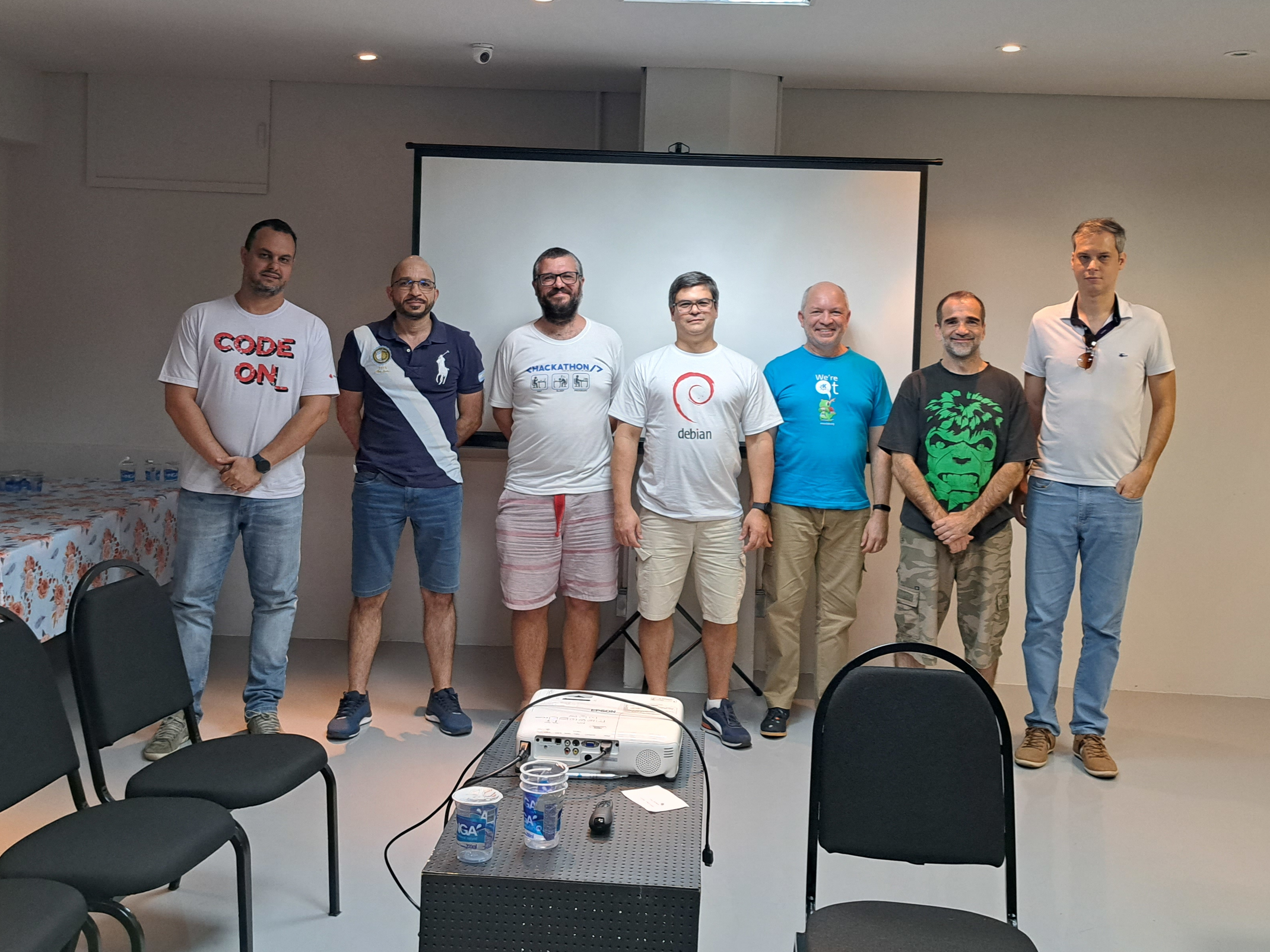
 Pela primeira vez a cidade de Belo Horizonte realizou um
Debian Day para celebrar o
anivers rio do Projeto Debian.
As comunidades Debian Minas Gerais
e Software Livre de BH e Regi o
se sentiram motivadas para celebrar esta data especial devido aos 30 anos do
Projeto Debian em 2023 e organizou um encontro no dia 12 de agosto dentro
Espa o do Conhecimento da UFMG.
A organiza o do Debian Day em Belo Horizonte recebeu o importante apoio do
Departamento de Ci ncia da Computa o da UFMG para
reservar a sala que foi utilizada para o evento.
A programa o contou com tr s atividades:
Pela primeira vez a cidade de Belo Horizonte realizou um
Debian Day para celebrar o
anivers rio do Projeto Debian.
As comunidades Debian Minas Gerais
e Software Livre de BH e Regi o
se sentiram motivadas para celebrar esta data especial devido aos 30 anos do
Projeto Debian em 2023 e organizou um encontro no dia 12 de agosto dentro
Espa o do Conhecimento da UFMG.
A organiza o do Debian Day em Belo Horizonte recebeu o importante apoio do
Departamento de Ci ncia da Computa o da UFMG para
reservar a sala que foi utilizada para o evento.
A programa o contou com tr s atividades:

Gamescope/SteamDeck. Even with the challenges of being external developers,
we have been working on mapping AMD GPU color capabilities to the Linux
kernel color management interface, which is a combination of DRM and AMD
driver-specific color properties. This more extensive color management pipeline
includes pre-defined Transfer Functions, 1-Dimensional LookUp Tables (1D
LUTs), and 3D LUTs before and after the plane composition/blending.
DCN 3.0 family color caps
and mapping diagram below shows the Linux/DRM color interface without
driver-specific color properties [*]:
 Bearing in mind that we need to know the variety of color pipelines in the
subsystem to be clear about a generic solution, we decided to approach the
issue from a different perspective and worked on enabling a set of
Bearing in mind that we need to know the variety of color pipelines in the
subsystem to be clear about a generic solution, we decided to approach the
issue from a different perspective and worked on enabling a set of
Driver-Specific Color Properties for AMD Display Drivers. As a result, I
recently sent another round of the AMD driver-specific color mgmt
API.
For those who have been following the AMD driver-specific proposal since the
beginning (see
[RFC][V1]),
the main new features of the latest version
[v2]
are the addition of pre-blending Color Transformation Matrix (plane CTM) and
the differentiation of Pre-defined Transfer Functions (TF) supported by color
blocks. For those who just got here, I will recap this work in two blog posts.
This one describes the current status of the AMD display driver in the Linux
kernel/DRM subsystem and what changes with the driver-specific properties. In
the next post, we go deeper to describe the features of each color block and
provide a better picture of what is available in terms of color management for
Linux.
AMD Display Manager (DM) intermediates requests between the
AMD Display Core component (DC) and the Linux/DRM kernel interface for
color management features. It also describes the relevant function to call the
AMD color module in building curves for content space transformations.
A subsection also describes hardware color capabilities and how they evolve
between versions. This subsection, DC Color Capabilities between DCN
generations,
is a good starting point to understand what we have been doing on the kernel
side to provide a broader color management API with AMD driver-specific
properties.
wide color gamut (WCG), convert High-Dynamic-Range (HDR)
content to Standard-Dynamic-Range (SDR) content (and vice-versa). With a
GPU-accelerated display color management pipeline, we can use hardware blocks
for color conversions and color mapping and support advanced color management.
The current DRM color management API enables us to perform some color
conversions after blending, but there is no interface to calibrate input space
by planes. Note that here I m not considering some workarounds in the AMD
display manager mapping of DRM CRTC de-gamma and DRM CRTC CTM property to
pre-blending DC de-gamma and gamut remap block, respectively. So, in more
detail, it only exposes three post-blending features:
DCN 3.0 family color caps and mapping diagram
closer and present it here again:
 Mixing AMD driver-specific color properties with DRM generic color properties,
we have a broader Linux color management system with the following features
exposed by properties in the plane and CRTC interface, as summarized by this
updated diagram:
Mixing AMD driver-specific color properties with DRM generic color properties,
we have a broader Linux color management system with the following features
exposed by properties in the plane and CRTC interface, as summarized by this
updated diagram:
 The blocks highlighted by
The blocks highlighted by red lines are the new properties in the
driver-specific interface developed by me (Igalia) and Joshua (Valve). The red
dashed lines are new links between API and AMD driver components implemented by
us to connect the Linux/DRM interface to AMD hardware blocks, mapping
components accordingly. In short, we have the following color management
properties exposed by the DRM/AMD display driver:
stream gamut remap matrixes from the DPP gamut remap block. That
means mapping AMD plane CTM directly to DPP/pre-blending gamut remap block and
DRM CRTC CTM to MPC/post-blending gamut remap block. In this sense, I also
limited plane CTM properties to those hardware versions with MPC/post-blending
gamut_remap capabilities since older versions cannot support this feature
without clashes with DRM CRTC CTM.
Unfortunately, I couldn t prevent conflict between AMD plane de-gamma and DRM
plane de-gamma since post-blending de-gamma isn t available in any AMD hardware
versions until now. The fact is that a post-blending de-gamma makes little
sense in the AMD color pipeline, where plane blending works better in a linear
space, and there are enough color blocks to linearize content before blending.
To deal with this conflict, the driver now rejects atomic commits if users try
to set both AMD plane de-gamma and DRM CRTC de-gamma simultaneously.
Finally, we had no other clashes when enabling other AMD driver-specific color
properties for our use case, Gamescope/SteamDeck. Our main work for the
remaining properties was understanding the data flow of each property, the
hardware capabilities and limitations, and how to shape the data for
programming the registers - AMD color block capabilities (and limitations) are
the topics of the next blog post. Besides that, we fixed some driver bugs along
the way since it was the first Linux use case for most of the new color
properties, and some behaviors are only exposed when exercising the engine.
Take a look at the Gamescope/Steam Deck Color
Pipeline[**],
and see how Gamescope uses the new API to manage color space conversions
and calibration (please click on the image for a better view):
 In the next blog post, I ll describe the implementation and technical details
of each pre- and post-blending color block/property on the AMD display driver.
* Thank Harry Wentland for helping with diagrams, color concepts and AMD capabilities.
** Thank Joshua Ashton for providing and explaining Gamescope/Steam Deck color pipeline.
*** Thanks to the Linux Graphics community - explicitly Harry, Joshua,
Pekka, Simon, Sebastian, Siqueira, Alex H. and Ville - to all the learning
during this Linux DRM/AMD color journey. Also, Carlos and Tomas for organizing
the 2023 Display/HDR Hackfest where we have a great and immersive opportunity
to discuss Color & HDR on Linux.
In the next blog post, I ll describe the implementation and technical details
of each pre- and post-blending color block/property on the AMD display driver.
* Thank Harry Wentland for helping with diagrams, color concepts and AMD capabilities.
** Thank Joshua Ashton for providing and explaining Gamescope/Steam Deck color pipeline.
*** Thanks to the Linux Graphics community - explicitly Harry, Joshua,
Pekka, Simon, Sebastian, Siqueira, Alex H. and Ville - to all the learning
during this Linux DRM/AMD color journey. Also, Carlos and Tomas for organizing
the 2023 Display/HDR Hackfest where we have a great and immersive opportunity
to discuss Color & HDR on Linux.
Next.